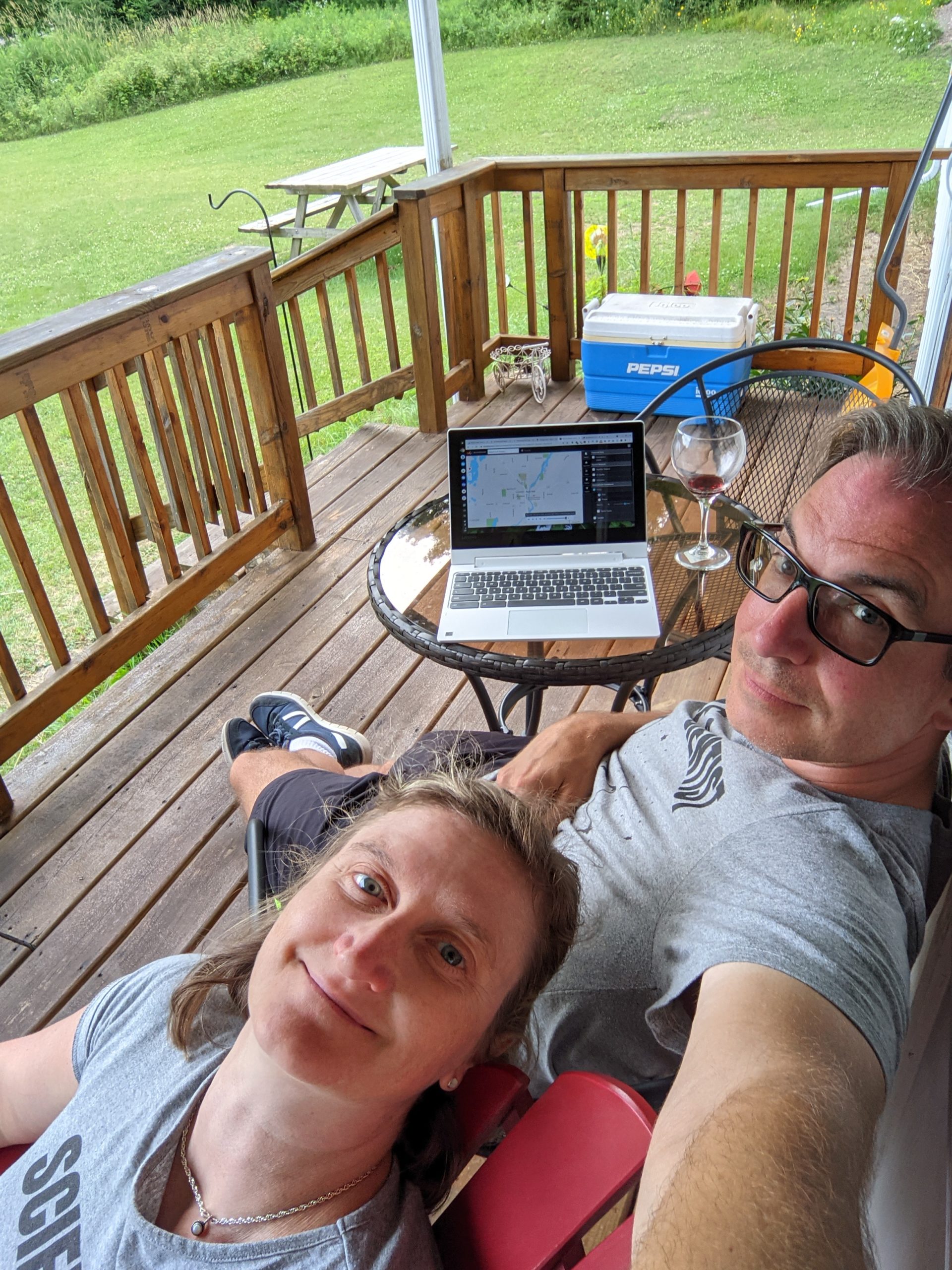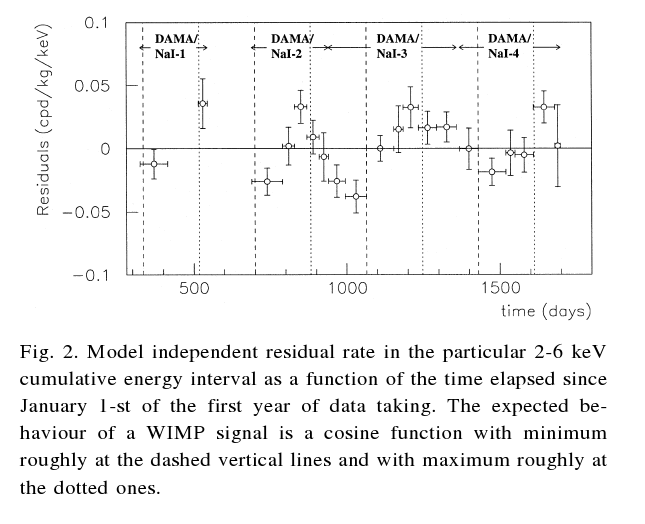These are my personal notes from day three of the Topics in Astroparticle and Underground Physics Conference. The full conference materials are online: https://indico.cern.ch/event/1199289/timetable/#20230830
August 30, 2023
We began the third day plenaries with a focus on dark matter. The first talk explore models for dark matter [Cirelli]. The potential candidate space for dark matter was framed as follows. There is the ultra-light regime, the realm of fields. This corresponds to masses from about ![]() –
–![]() . Then there is the regime of particle dark matter, from about
. Then there is the regime of particle dark matter, from about ![]() to the Planck scale (the physical limit of the meaning of a “fundamental particle”). Above the Planck scale is the regime of primordial black holes, or composite structures – the macroscopic regime.
to the Planck scale (the physical limit of the meaning of a “fundamental particle”). Above the Planck scale is the regime of primordial black holes, or composite structures – the macroscopic regime.
The focus began at the weak scale, and the case for a weakly interacting massive particle (WIMP) was reviewed. This has been literally meant as a formal weak interaction, one described by ![]() . It is attractive because there are theoretical reasons to expect new physics at the weak scale (about 1 TeV) and thermal freeze out provides an attractive mechanism for creating a relic density of dark matter. The speaker argued that thermal freeze out is still attractive even in light of non-observations of new particles above the weak scale at the LHC.
. It is attractive because there are theoretical reasons to expect new physics at the weak scale (about 1 TeV) and thermal freeze out provides an attractive mechanism for creating a relic density of dark matter. The speaker argued that thermal freeze out is still attractive even in light of non-observations of new particles above the weak scale at the LHC.
The Z boson portal has largely been excluded by direct detection experiments. The Higgs portal is nearly excluded by the current generation of experiments. However, a “W loop” portal (a next-to-leading-order interaction mechanism) is still viable but is accessible to the next generation direct detection experiments.Indirect detection experiments are pushing to multi-PeV WIMPs with extremal masses, and also pushing to weaker interaction rates (smaller self-interactions and/or interactions with the standard model).
Sub-GeV candidates are an expanding area of interest. “WIMPless” dark matter corresponds typically to a hidden or secluded dark matter model, ala Feng. The same “miracle” of a relic density is still possible with these candidates, but can be achieved with stronger interactions (so-called “SIMP” models). For example, if it is a ![]() process that sets the abundance, then the mass of dark matter will be
process that sets the abundance, then the mass of dark matter will be ![]() . See, for example, Hochberg et al. (arXiv:1402.5143)
. See, for example, Hochberg et al. (arXiv:1402.5143)
What are the search strategies for light candidates? The primary methods are electron recoils, the Migdal effect, and new strategies (covered in the subsequent talk). The indirect methods for such searches involve employing systems that are capable of observing low-energy cosmic rays, such as the Voyager probes beyond the Heliosphere. Also, photons can be used via inverse Compton scattering.
On the other end of the spectrum is ultra-heavy dark matter, typically represented by primordial black holes or other kinds of black holes. Microlensing constraints have essentially completely ruled out brown drawves and solar-variety black holes as plausible candidates. However, PBHs due to primordial plasma density fluctuations are still valid. They would have to have been produced before big bang nucleosynthesis. To give a sense of constraints on the masses of subject objects, a PBH with a mass of ![]() would, by Hawking radiation, evaporate right about now in the age of the universe. This would result in photons from such evaporations, and so while lensing may be a challenge photon detection would be able to spot such PBH disintegrations.
would, by Hawking radiation, evaporate right about now in the age of the universe. This would result in photons from such evaporations, and so while lensing may be a challenge photon detection would be able to spot such PBH disintegrations.
Finally, there is the sub-genre of “keV dark matter”. This is inspired by the 3.5 keV line, significant at the level of ![]() (albeit sitting on top of a large background). This astrophysical observation can be interpreted as due to a sterile neutrino with mass 7.1 keV, a lifetime of
(albeit sitting on top of a large background). This astrophysical observation can be interpreted as due to a sterile neutrino with mass 7.1 keV, a lifetime of ![]() , and a mixing angle
, and a mixing angle ![]() .
.
This talk concluded that the study and understanding of dark matter is really now in an experimentally driven phase.During the question and answer period, it was asked why asymmetric dark matter was not favoured in this discussion.The speaker indicated it was more a feeling than anything else, a sense that it’s a less-well-motivated hypothesis than what the speaker presented. It was also noted that LHC limits must be treated with caution as they are deeply tied to specific models and assumptions. The speaker noted that this is why they almost never appear on exclusion plots anymore.
The next speaker covered the direct detection of light DM particles [Schaeffner]. She noted that liquid nobles have scaled rapidly, overtaking the space once-dominated by other technologies (>1 GeV WIMP searches). Those same technologies have looked to other parts of parameter space, since anyway there has not yet been a detection of a heavier WIMP. The key mechanisms for detection for sub-GeV candidates are DM absorption and scattering, as well as wave-like phenomena.
The key channels for detection are elastic and inelastic interactions. There are many approaches – cryogenic detectors, CCDs, and liquid/gas noble detectors. The primary signals tend to be phonons/heat, the secondary signals from ionization. Semiconductors provide for both phonon and charge detection.
As an example of cryogenic detectors, EDELWEISS, CRESST-III, and SuperCDMS were mentioned. EDELWEISS has switched from NTDs to transition edge sensors to solve a background problem. This has resulted in threshold energies of about ![]() (
(![]() ). The charge resolution is at the level of 0.53e. The speaker noted that a new CRESST-III result was shown at the Monday parallel sessions.
). The charge resolution is at the level of 0.53e. The speaker noted that a new CRESST-III result was shown at the Monday parallel sessions.
The speaker reviewed liquid noble detectors and the physics of time projection chambers. She then reviewed elastic scattering in CCDs, and the CCD approach. She noted that the DAMIC-M daily modulation search result was being shown at TAUP and could be found in arXiv:2307.07251.
The challenges of the solid-state approaches are the low-energy excess (seen in both cryogenic and CCD detectors), a steeply rising background at low energy. A particle hypothesis is a disfavoured explanation for the LEE. Evidence points toward a solid-state or mechanical explanation. Another challenge is energy calibration, and a third challenge is the Migdal effect, relied upon for interpretation but not established experimentally as an observable effect. There was efforts underway and forthcoming on this latter subject.
The speaker then discussed the TESSARACT and HeRALD approaches, using liquid helium as a target. This is an active area of R&D. She then also noted PICOLON, SABRE, COSINE, and COSINUS as approaches intended to address the DAMA/LIBRA claims.
The next talk focused on heavy dark matter candidates [Kuzniak]. I took fewer notes during this talk as it was a very familiar review of such experiments. One notable item was the mention of the historical origins of the idea of a neutral current detector adapted to dark matter searches, dating back to 1983 and 1985.
The speaker noted that SABRE is not online yet, but has the purest crystals so far achieved. The speaker also noted that the PANDA Collaboration have interpreted their results in the context of a widely standard effective field theory.
The next talk focused on axion-like dark matter [Ringwald]. They began with a review of the strong CP problem and the Peccei-Quinn solution, resulting in the PQ axion. The talk adhered fairly closely to the parameter space of the axion that solves the strong CP problem. They noted that PQ symmetry can break either before or after inflation. If it breaks before, the typical scenario of an oscillating field suppressed by inflation, then revealed once inflation concludes (like removing damping from an oscillating system), results in ![]() . If PQ symmetry breaks after inflation, it becomes harder to constrin the axion mass. There result toplogical defects and other non-linear dynamics, but one can place a lower limit of
. If PQ symmetry breaks after inflation, it becomes harder to constrin the axion mass. There result toplogical defects and other non-linear dynamics, but one can place a lower limit of ![]() .
.
The major approaches are haloscopes, dish antennae, plasma haloscopes, and lumped-element detectors. ADMX isa haloscope experiment, where the cavity resonance frequency can tell you the axion mass if a resonance is detected (![]() ). That resonance is enhanced by the Q-value of the cavity, and one scans in mass by re-tuning the cavity. These are typically narrow-band searches, limited by the physical size of the cavity and the ability to alter the resonance with tuning rods.
). That resonance is enhanced by the Q-value of the cavity, and one scans in mass by re-tuning the cavity. These are typically narrow-band searches, limited by the physical size of the cavity and the ability to alter the resonance with tuning rods.
BRASS, BREAD, and MADMAX are all examples of the dish antenna concept. These can be broadband, but they need very large magnetized surfaces. MADMAX is an example of an open-disk resonator using a series of dielectric disks, and the full MADMAX experiment can be expected in 2030.
ALPHA is an example of a plasma haloscope, and is working toward ALPHA Pathfinder right now. Plasmons are generated in the device when ![]() .
.
Finally, there are ABRACADABRA and DM RADIO, ADMX-SLIC, and SHAFT as examples of lumped-element detectors. These look for an oscillating magnetic field where none should exist. They can probe monopole-philic candidates, which is a unique capability of this approach.
The next talk focused on DM searches using colliders [Pinnah]. Colliders can help in two regimes: the MeV-GeV regime where we have small couplings that necessitate high-intensity processes, and the GeV-TeV regime where we have high masses and thus requite high energies to probe them.
The experiments at the energy frontier are CMS, ATLAS, and LHCb. The key signatures are missing energy and momentum, a sign of something(s) recoiling against detetable particles but which do not themselves leave traces (CMS and ATLAS). The other is the use of low-threshold capabilities (LHCb).
A number of searches were presented: DM+Z’, DM+![]() , invisible Higgs decay, low-mass dimuon resonance searches,
, invisible Higgs decay, low-mass dimuon resonance searches, ![]() , and long-lived particles that decay displaces from the collider interaction point. All resulted in null observations.
, and long-lived particles that decay displaces from the collider interaction point. All resulted in null observations.
At the intensity frontier, the key signatures are missing energy, momentum, or mass; rescattering, as in beam dump experiments; and (semi-)visible searches using displaced detectors. Some examples are BELLE-II and NA64 using missing energy and mass; FASER, using displaced detection from the production point; and ![]() BOONE using rescattering. Mofre experimental examples were given for these experiments, all yielding null results. The speaker concluded by noting that there is need for a coherent framework in which to combine results from all detection methodologies. It was noted inthe Q&A that a meeting Friday, after the formal close of the conference, was to be held to discuss such issues.
BOONE using rescattering. Mofre experimental examples were given for these experiments, all yielding null results. The speaker concluded by noting that there is need for a coherent framework in which to combine results from all detection methodologies. It was noted inthe Q&A that a meeting Friday, after the formal close of the conference, was to be held to discuss such issues.
The next talk focused on DM searches via astrophysics [Bell]. The emphasis was on WIMP dark matter, probed via DM scattering and annihilation cross-sections.
The speaker began by reviewing annihilation of dark matter in to SM particles as a signature. There remains a region of interest in cross-section (![]() ) and mass, a triangle of space between 10-
) and mass, a triangle of space between 10-![]() GeV and
GeV and ![]() , that can be explored in the WIMP hypothesis. Annihilation should be enhanced in regions of the universe where DM concentrates more, such as the galactic centre or in dwarf galaxies. That aforementioned “WIMP window” can be closed out in several years with experiments.
, that can be explored in the WIMP hypothesis. Annihilation should be enhanced in regions of the universe where DM concentrates more, such as the galactic centre or in dwarf galaxies. That aforementioned “WIMP window” can be closed out in several years with experiments.
Scattering offers the chance to improve sensitivity in low-mass regions where direct detection methods struggle. One example was the “Boosted DM” mechanism where halo DM particles with ![]() get Lorentz boosted by astrophysics, such as via cosmic ray up-scattering. This small fraction of high-velocity DM particles have enhanced interaction cross-sections. This process must happen if there is a non-zero SM interaction strength. Such boosted DM particles can then annihilate and result in neutrinos with energies easily seen by experiments with large masses and higher thresholds. The challenge is the small expected flux. The observable signal scales as two powers of the scattering cross-section.
get Lorentz boosted by astrophysics, such as via cosmic ray up-scattering. This small fraction of high-velocity DM particles have enhanced interaction cross-sections. This process must happen if there is a non-zero SM interaction strength. Such boosted DM particles can then annihilate and result in neutrinos with energies easily seen by experiments with large masses and higher thresholds. The challenge is the small expected flux. The observable signal scales as two powers of the scattering cross-section.
The next subject was DM capture in stars. Examples were our own sun, neutron stars, and white dwarves. This is an old idea. Gravitational capture of DM collects the particles in the core. Annihilation of DM results in energy lost from the start, cooling the core. A key signature would be neutrinos emitted form the sun above the fusion energy range (e.g., via ![]() . This approach allows for spin-dependent constraints.
. This approach allows for spin-dependent constraints.
An alternative detection mechanism would be gamma rays from the sun due to ![]() . The dark photons have a very weak mixing with standard model photons, and so escape the sun but then decay later. This leads to high-energy gamma rays. HAWC is an example of an instrument that has looked for such photons.
. The dark photons have a very weak mixing with standard model photons, and so escape the sun but then decay later. This leads to high-energy gamma rays. HAWC is an example of an instrument that has looked for such photons.
Capture in neutron stars leads to what the speaker called “the ultimate dark matter direct detection experiment” owing to the ultra-dense nature of such stars. The cross-sections work out such that there is an order 1 probability of capture. This leads to neutron star heating. Capture is estimated to potentially add 1700K to such a body (from kinetic energy loss by the DM), while annihilation will add another 700K (adding the mass-energy to the star). The strategy is to look for old neutron stars in a DM-rich region. The coolest such known star is 42,000K.
We broke for lunch and then dove into the parallel session talks. I was eager to attend the COSINUS talk, where they discussed the successful operation of their remoTESs [Zema]. The installation will have a water tank to reduce cosmogenic backgrounds to 0.1 counts/kg/year, making this an ultra-low background NaI experiment. Installation of the cryogenic systems is next.
Phonons are read out using the remoTES design, with a gold pad attached to the NaI crystal and a gold wire bond over to the TES. This should yield ecxcellent background rejection from phonons and light. The quenching factor is a key target for these crystals.
The collaboration already has results from a 3.67g, ![]() crystal that was operated in the CRESST facility. This yielded and 11.6 gram-day exposure. They have achieved an energy resolution of about 0.4 keV and have set the software energy threshold to 4 keV for now.
crystal that was operated in the CRESST facility. This yielded and 11.6 gram-day exposure. They have achieved an energy resolution of about 0.4 keV and have set the software energy threshold to 4 keV for now.
The quenching factor has been assessed as a function of tellurium concentration in the crystals (NaI(Tl)). There is a later talk on this subject. Data taking for COSINUS is expected in late 2024, with first physics results in mid-2025.
I attended also talks from SABRE [D’Imperio] and ANAIS [Yanguas]. Both experiments use NaI and both are conducting recoil and modulation analyses. SABRE has confirmed that its goal of 1 count/day/kg/keV (in the E=[1,6]keV region) is achievable. They have a very low ![]() contamination in their crystals. SABRE North (NGS) has its technical design review slated for summer 2024. SABRE South, which will eventually be located at the Stawell Undeground Physics Lab (SUPL) in Australia, is otherwise ready for installation in about 1-2 years. SABRE expected 3-5 years of data will be required to assess the DAMA/LIBRA claims.
contamination in their crystals. SABRE North (NGS) has its technical design review slated for summer 2024. SABRE South, which will eventually be located at the Stawell Undeground Physics Lab (SUPL) in Australia, is otherwise ready for installation in about 1-2 years. SABRE expected 3-5 years of data will be required to assess the DAMA/LIBRA claims.
The ANAIS talk focused on neutron calibrations. A talk on Thursday would cover the analysis of 112kg of NaI data. The calibrations are an effort to determine experimentall the quenching factor for these crystals. DAMA/LIBRA has assumed their quenching factor, but there is disagreement between what they have assumed and what has been measured in other crystals. TUNL provides monochromatic neutrons for this purpose for ANAIS. There is also a Cf-252 source, but Monte Carlo is needed to unfold the results. With monochromatic neutrons, they find a 21% QF. It appears constant. Lots of details work and tests are in the slides.
I then presented my poster on behalf of the HALO Collaboration. I was pretty burned out after that, and so I skipped note taking for the last parallel sessions and just tried to enjoy the talks without thinking too much.





